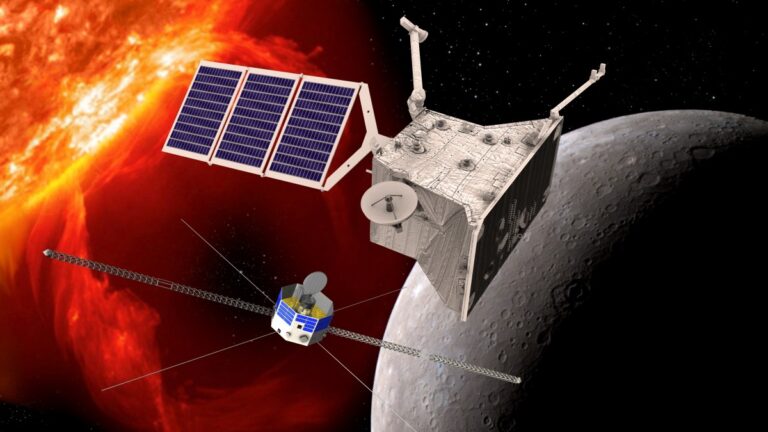European Research Council has awarded competitive ERC Consolidator Grant funding to Riku Järvinen’s space weather research project at the Finnish Meteorological Institute. The grant is for five years and approximately €2m (US$2.15m).
The funded project studies space weather as observed by the European Space Agency and Japan Aerospace Exploration Agency’s BepiColombo Mercury orbiters and modeled by computer simulations. The project is expected to increase our ability to mitigate the adverse effects of space weather on technological systems and humans in space near Earth and elsewhere in the solar system.
The project brings new scientific understanding, especially about the generation and dynamics of energetic particles in magnetospheres and properties of strong space weather phenomena. In addition, solar wind particles impacting the surface minerals of Mercury are studied – these impacts release atoms and molecules from the planetary surface leading to the formation of a tenuous exosphere.
Finnish Meteorological Institute scientist Riku Järvinen said, “The ERC project enables the development of a new type of global particle simulation model for space weather. We will use it to interpret new observations from Mercury’s magnetosphere as well as space weather at other planets in the future.”
BepiColombo arrives at Mercury in December 2025. After this, the two probes are inserted into their own orbits around the planet. The Finnish Meteorological Institute leads the development of a joint micro controller for the Finnish-lead SIXS instrument and the English-lead MIXS instrument in the BepiColombo program. The participation in BepiColombo is among the biggest investments in solar system exploration missions by Finland.
Järvinen continued, “In addition to Earth, several advanced numerical simulation models for space weather of all terrestrial planets, Moon and other smaller celestial bodies have been developed at the Finnish Meteorological Institute since 1990s. We have also participated in building instrumentation and international science programs on many solar system missions.”
Read more of the latest space weather updates from the meteorological technology industry, here.



